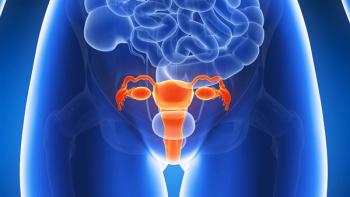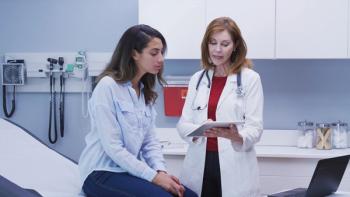
Excess Body Weight and Cancer: A National Perspective
While oncology nurses have historically focused on their roles within active cancer therapy settings, it is timely to consider expanding our influence to encompass cancer prevention.
Excess body weight (EBW) is an established cause of cancer in multiple solid tumors, including colorectal, esophagus, stomach, liver, gallbladder, pancreas, female breast, uterine, ovarian, renal, thyroid and multiple myeloma.1 In the United States, incidence rates of these malignancies have increased.2 State-specific incidence of EBW was recently delineated in an effort to augment national cancer control initiatives.3
Using de-identified public data, the body mass index (BMI) of adults 30 years of age and older in all 50 states was used to determine the association between weight and various cancers. Overall, each year, about 37,670 cancer cases in men and 74,690 in women were attributable to EBW.3 In general, women had EBW associations with cancer twice as high as men. The largest correlation with EBW and cancer was identified in southern and mid-western states as well as Alaska and the District of Columbia. State by state, EBW was noted to account for 1 in 17 incident cancers in all 50 states.3
Overall, lifestyle behaviors such as excess weight and sedentary norms are estimated to contribute to 30%-40% of all cancer cases.4,5 Additionally weight control, diet, and level of physical activity are not only modifiable determinants of initial cancer risk but also of cancer progression following diagnosis.6 In women’s malignancies, like female breast, endometrial, and ovarian cancer, this association is particularly relevant.7,8
Oncology nurses can be invaluable ambassadors in the promotion of cancer prevention. While many oncology nurses may not have pursued this yet they have great potential to prove influential in public awareness. Perceived as highly credible teachers, we have the capability to enlighten and influence the lay public about modifiable cancer risk. Additionally, in acknowledging that EBW is more common in lower socioeconomic groups, oncology nurses practicing in these settings are especially positioned to contribute to and enhance widespread community education. From a policy perspective, we can lobby to reduce access to, and marketing of, unhealthy foods (i.e., via taxation of sugar-laden drinks and foods).
While oncology nurses have historically focused on their roles within active cancer therapy settings, it is timely to consider expanding our influence to encompass cancer prevention.
References:
1.
Lauby-Secretan B, Scoccianti C, Loomis D, Grosse Y, Bianchi F, Straif K (2016). International Agency for Research on Cancer Handbook Working Group: Body fatness and cancer — Viewpoint of the IARC Working Group. NEJM, 375(8): 794- 798.
2.
Steele CB, Thomas CC, Henley SJ et.al. (2017). Vital signs: Trends in incidence of cancers associated with overweight and obesity — United States, 2005-2014. MMWR Morb Mortal Wkly Rep, 66(39): 1052-1058.
3. I
slami F, Sauer AG, Gapstur SM, Jemal A (2018). Proportion of cancer cases attributable to excess body weight by U.S. state, 2011-2015. JAMA Oncol, DOI: 10.1001/jamaoncol.2018.5639.
4.World Cancer Research Fund (WCRF) (2007). Food, nutrition, physical activity, and the prevention of cancer: A global perspective. World Cancer Research Fund/American Institute for Cancer Research: London.
5.Rohan EA, Miller N, Bonner F et.al., (2018). Comprehensive cancer control: Promoting survivor health and wellness. Cancer Causes & Control, 29: 1277-1285.
6. Meyskens FL, Mukhtar H, Rock CL et.al. (2016). Cancer prevention: Obstacles, challenges, and the road ahead. JNCI, 108(2): djv309; DOI: 10.1093/jnci/dvj309.
7. Arthur R, Kirsch VA, Kreiger N, Rohan T (2018). A healthy lifestyle and its association with risk of breast, endometrial, and ovarian cancer among Canadian women. Cancer Causes & Control, 29: 485-493.
8.Arthur R, Wassertheil-Smoller S, Manson JE et.al. (2018). The combined association of modifiable risk factors with breast cancer risk in the Women’s Health Initiative. Cancer Prev Res, 11(6): 317-326.
Newsletter
Knowledge is power. Don’t miss the most recent breakthroughs in cancer care.




